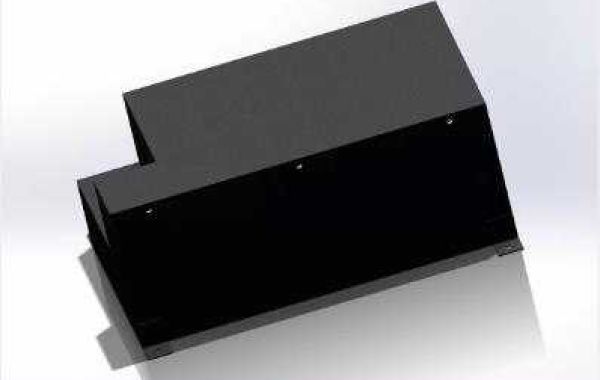Lithium-ion batteries are widely used due to their high life and high capacity. However, with the prolongation of use time, the problems of bulging, unsatisfactory safety performance, and accelerated cycle decay are becoming more and more serious, which has caused in-depth analysis and suppression in the lithium battery industry. Research.
Causes of Li-ion Batteries Bulging
According to the experimental research and development experience, the author divides the reasons for the bulging of lithium batteries into two categories, one is the bulging caused by the thickness change of the battery pole piece; the other is the bulging caused by the oxidative decomposition of the electrolyte to produce gas.
Dominant factors in thickness variation of Li-ion batteries
In different battery systems, the dominant factors for the thickness change of lithium-ion batteries are different. For example, in lithium titanate negative electrode system batteries, the main factor for bulging is the gas drum; bulges all play a role in promoting.
A detailed explanation of the reasons for the bulging of lithium-ion batteries
1. The thickness change of the lithium-ion battery pole piece
During the use of lithium-ion batteries, the thickness of the electrode pieces will change to a certain extent, especially the graphite negative electrode. According to existing data, lithium-ion batteries are prone to bulge after high-temperature storage and cycling, and the thickness growth rate is about 6% to 20%, of which the positive electrode expansion rate is only 4%, and the negative electrode expansion rate is more than 20%. The root cause of the bulging caused by the increase in the thickness of the lithium-ion battery pole piece is affected by the nature of graphite. The negative electrode graphite forms Linx (LiC24, LiC12, and LiC6, etc.) when intercalating lithium, and the lattice spacing changes, resulting in the formation of microscopic internal stress, which makes the negative electrode produces expansion.

1) Expansion of graphite anode of lithium-ion battery
The expansion of the graphite negative electrode of lithium-ion battery is mainly caused by irrecoverable expansion after lithium intercalation. This part of the expansion is mainly related to the particle size, the binder, and the structure of the pole piece. The expansion of the negative electrode of the lithium-ion battery causes the deformation of the winding core, which causes the formation of voids between the lithium-ion battery electrode and the separator, the formation of microcracks in the negative electrode particles, the rupture and reorganization of the solid electrolyte phase interface (SEI) film, the consumption of the electrolyte, and the cycle of the lithium-ion battery. Performance deteriorates. There are many factors that affect the thickness of the negative pole piece. The properties of the binder and the structural parameters of the pole piece are the two most important.
2) The influence of the graphite anode binder on the thickness of the pole piece for lithium-ion batteries
The commonly used binder for the graphite negative electrode of lithium-ion batteries is SBR. Different binders have different elastic modulus and mechanical strength and have different effects on the thickness of the pole piece. The rolling force after the pole piece coating is completed also affects the thickness of the negative pole piece in the use of the lithium-ion battery.
Under the same stress of lithium-ion battery, the larger the elastic modulus of the adhesive, the smaller the physical rebound of the pole piece; when the lithium-ion battery is charged, the graphite lattice expands due to the insertion of Li +; at the same time, due to the negative electrode particles and SBR, the internal stress is completely released, the expansion rate of the negative electrode of the lithium-ion battery increases sharply, and the SBR is in the plastic deformation stage. This part of the expansion ratio is related to the elastic modulus and breaking strength of SBR, resulting in the larger the elastic modulus and breaking strength of SBR, the smaller the irreversible expansion.
When the amount of SBR added is inconsistent, the pressure of the lithium-ion battery pole piece during rolling will be different. Different pressures will cause a certain difference in the residual stress generated by the pole piece. The expansion rate of the electric state and the empty electric state increases; the smaller the SBR content, the smaller the pressure during rolling, and the smaller the expansion rate of the physical shelving, full electric state, and empty electric state in the early stage; the expansion of the negative electrode of the lithium-ion battery makes The deformation of the winding core affects the degree of lithium intercalation and the diffusion rate of Li + in the negative electrode, which in turn has a serious impact on the cycle performance of the battery.

2. Bulge caused by gas production of lithium-ion batteries
1) The nature of flatulence of lithium-ion battery cells
The gas production inside the battery is another important reason for the bulging of the lithium-ion battery. Whether the lithium-ion battery is cycled at room temperature, high-temperature cycle, or shelved at high temperature, it will produce different degrees of bulging and gas production. According to the current research results, the essence of causing flatulence in lithium-ion battery cells is the decomposition of electrolytes.
2) Decomposition of lithium-ion battery electrolyte
There are two situations in the decomposition of lithium-ion battery electrolytes. One is that the electrolyte has impurities, such as moisture and metal impurities, which cause the electrolyte to decompose and produce gas. The other is that the electrochemical window of the electrolyte is too low, resulting in decomposition during charging. EC, DEC, and other solvents in the electrolyte will generate free radicals after obtaining electrons. The direct consequence of the free radical reaction is the generation of low-boiling hydrocarbons, esters, ethers, and CO2.
Electrolyte decomposition gas production:
After the lithium battery is assembled, a small amount of gas will be generated during the performing process. These gases are unavoidable and are also the source of the so-called irreversible capacity loss of the cell. During the first charge and discharge process of a lithium-ion battery, after the electrons reach the negative electrode from the external circuit, a redox reaction occurs with the electrolyte on the surface of the negative electrode to generate gas.

During this process, SEI is formed on the surface of the graphite anode of Li-ion batteries, and as the thickness of the SEI increases, the inability of electrons to penetrate inhibits the continuous oxidative decomposition of the electrolyte of Li-ion batteries.
During the use of lithium-ion batteries, internal gas production will gradually increase, and the reason is that there are impurities in the electrolyte or excessive moisture in the battery.
Impurities in the electrolyte of lithium-ion batteries need to be carefully eliminated. The lack of strict moisture control may be caused by the electrolyte itself, the lack of strict packaging of lithium-ion batteries, and the damage to corners. In addition, lithium-ion batteries are overcharged and over-discharged. Abuse, internal short circuits, etc. It will also accelerate the gas production rate of the battery, causing the lithium-ion battery to fail.
3) The degree of swelling of lithium-ion batteries of different systems
In different systems, lithium-ion batteries produce different degrees of swelling. In the graphite anode system battery, the main reasons for gas production and bulging are the above-mentioned SEI film formation, excessive moisture in the cell, abnormal formation process, poor packaging, etc., while in the lithium titanate anode system, the lithium-ion battery swell ratio Graphite/NCM battery system is much more serious. In addition to impurities, moisture, and process in lithium-ion battery electrolytes, another reason that is different from graphite anode is that lithium titanate cannot form SEI on its surface like graphite anode system batteries. membrane, inhibiting its reaction with the electrolyte.
In the process of charging and discharging, the electrolyte of lithium-ion battery is always in direct contact with the surface of Li4Ti5O12, resulting in continuous reduction and decomposition of electricity on the surface of Li4Ti5O12 material, which may be the root cause of flatulence of Li4Ti5O12 battery. The main components of the gas are H2, CO2, CO, CH4, C2H6, C2H4, C3H8, etc.
When the lithium titanate is immersed in the lithium-ion battery electrolyte alone, only CO2 is generated. After it is prepared into a lithium-ion battery with NCM materials, the generated gas includes H2, CO2, CO, and a small number of gaseous hydrocarbons, and is made into lithium After the ion battery, H2 will be generated only during the cycle of charge and discharge, and the content of H2 in the gas generated at the same time exceeds 50%. This indicates that H2 and CO gas will be generated during charging and discharging.
PF5 is a strong acid that easily causes the decomposition of carbonates and the amount of PF5 increases with temperature. PF5 contributes to the decomposition of lithium-ion battery electrolytes, producing CO2, CO, and CxHy gases. According to related research, the generation of H2 comes from trace water in the electrolyte, but the general water content in the electrolyte is about 20×10-6, which contributes very little to the production of H2.
3. Solutions to inhibit the flatulence of lithium-ion batteries
Using graphite/NCM111 as the battery, it was concluded that the source of H2 was the decomposition of carbonate under high voltage. At present, there are three main solutions for suppressing flatulence in lithium titanate batteries. First, processing and modification of LTO anode materials, including improving preparation methods and surface modification, etc.; second, developing electrolytes that match LTO anodes, including additives, and Solvent systems; Third, improving battery technology.
Well, the above is the whole content of the lithium-ion battery bulging reasons brought by the lithium battery manufacturer. After the analysis of the above content, I believe that everyone has an understanding of the bulging causes and improvement measures of lithium-ion batteries. More Information about lithium-ion batteries can be found below:
How do lithium-ion batteries work?
The secret of lithium-ion battery energy density








